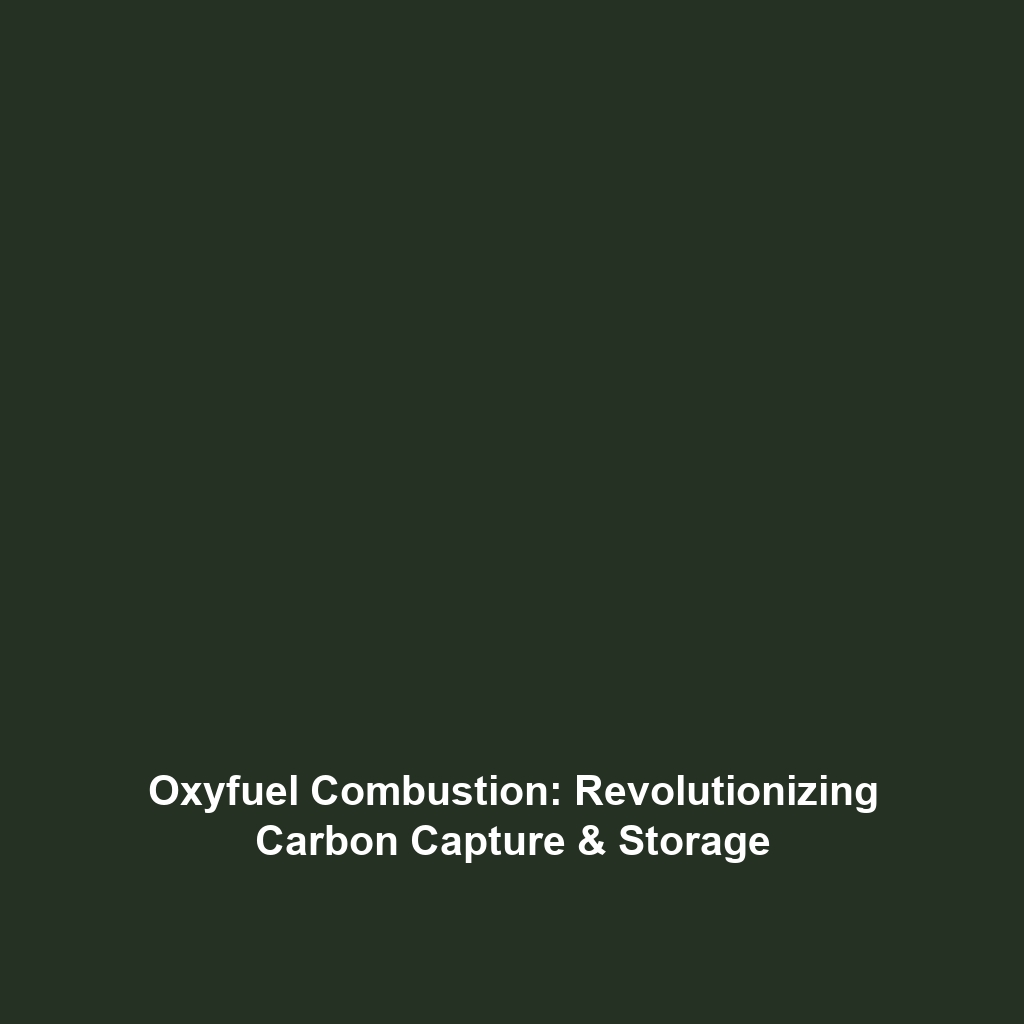Carbon Capture & Storage (CCS): The Role of Chemical Solvents in CO2 Absorption
Introduction: As nations strive to combat climate change, Carbon Capture & Storage (CCS) technologies are increasingly viewed as essential. Among these, the technology that uses chemical solvents (e.g., amines) to absorb CO2 holds significant promise. This method efficiently captures carbon dioxide emissions—preventing them from entering the atmosphere—and facilitates the separation and compression of CO2 for safe storage. By highlighting chemical solvents and their role in CCS, we delve into a critical aspect of sustainable energy solutions.
Key Concepts
The use of chemical solvents, particularly amines, is a cornerstone of the carbon capture process. These solvents are designed to selectively absorb CO2 from exhaust gases emitted by industrial sources. Here are some key concepts:
1. Absorption Process
- Chemical Reaction: Amines react with CO2 to form carbamates, which captures the gas.
- Separation: Once CO2 is absorbed, the mixture is heated to release the gas, allowing for its collection.
- Compression: Captured CO2 is compressed and transported to storage sites, either underground or for reuse.
2. Integration with CCS
This technology fits into the broader context of CCS by offering a scalable method for reducing greenhouse gas emissions from industrial processes. As industries continue to face emissions regulations, understanding the principles behind amine absorption is vital for implementing CCS strategies effectively.
Applications and Real-World Uses
Real-world applications of chemical solvents for CO2 absorption are diverse and impactful. Some notable examples include:
- Power Generation: Utilities use amines in coal-fired power plants to capture CO2 emissions.
- Cement Production: The cement industry integrates CCS technologies to reduce its carbon footprint.
- Natural Gas Processing: Gas processing plants employ these technologies to mitigate CO2 emissions during extraction.
These applications demonstrate how chemical solvents ameliorate the environmental impact of various industrial operations, showcasing the applications of CO2 capture technology in CCS.
Current Challenges
While the use of chemical solvents in CCS presents significant benefits, several challenges persist:
- Cost: The installation and operational costs of amine-based systems can be substantial.
- Solvent Degradation: Continual exposure to CO2 can lead to solvent degradation, which affects efficiency and performance.
- Energy Requirements: Significant energy is needed to regenerate amines, reducing overall effectiveness from an energy perspective.
Addressing these challenges of chemical solvent applications is essential for the broader deployment of CCS technologies.
Future Research and Innovations
Research into enhancing the efficiency and sustainability of chemical solvents is ongoing. Future innovations may include:
- Next-Generation Solvents: Development of more effective, less energy-intensive amines.
- Reuse of Captured CO2: Innovative methods for utilizing captured CO2 in various industrial processes.
- Improvements in Process Design: Integrating new technologies to lower costs and increase energy efficiency.
Continued investment in this area can lead to breakthroughs that significantly advance the impact of CCS.
Conclusion
The technology of chemical solvents (e.g., amines) to absorb CO2 is vital to the field of Carbon Capture & Storage (CCS). Understanding and improving this process is crucial for industries striving for sustainability. Stakeholders are encouraged to explore further advancements in this space to bolster their contributions to mitigating climate change. For more information on related topics, consider reviewing our articles on CCS Technologies and Reducing Carbon Footprint.









